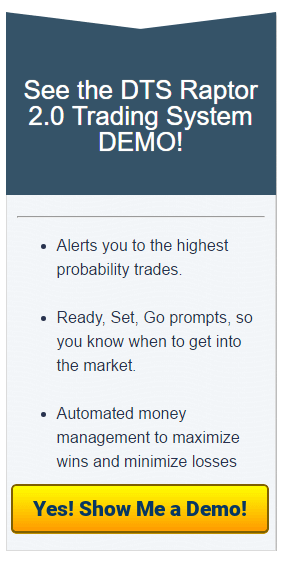Day Trading Tips and Tricks
Trading Burnout… Are You a Boiled Frog?
[1:47 No frogs were injured when making this video]
What is trading burnout?
I checked out several sources and here are some of the definitions:
1. The cessation of operation usually of a jet or rocket engine; also: the point at which burnout occurs.
2. Exhaustion of physical or emotional strength or motivation usually as a result of prolonged stress or frustration.
3. A term for a mental or physical energy depletion after a period of chronic, unrelieved job-related stress, sometimes characterized by physical illness.
The person suffering from burnout may lose concern or respect for other people and often has cynical, dehumanized perceptions of people, labeling them in a derogatory manner.
Root Causes of Burnout
Causes of burnout often include one or more of the following:
- Stressful, even dangerous, work environments
- Lack of support
- Lack of respectful relationships within a team
- Low pay scales compared with others salaries
- Pressure from constant high levels of awareness over long periods
- Frustration and disillusionment resulting from the difference between realities and expectations

Capitulation in the markets typically occurs at high and low price extremes. It is the point at which the pain of loss overwhelms the thought process resulting in the liquidation of existing positions. When prices reach extremes quickly, the resulting action is one of panic buying or panic selling and when large market orders are entered it often results in a stronger momentum spike. As we are taught through statistical studies when something moves 1, 2 or 3 standard deviation points away from its mean the probability of a return to the average is high.
Symptoms of Trading Burnout. Are you starting to cook?
- Feeling overwhelmed -There is too much to do. I don’t have the time.
- A Sense of hopelessness – This is never going to work.
- Feeling Powerlessness -This is never going to change
- Becoming cynical -Nobody cares really. Everyone is apathetic
- Sense of resentment – Towards people and organizations
- Anger – I am pissed off
- Emotional outbursts – flying off the handle or having a meltdown
- Depression – Woe is me
- Depletion of energy -Not as motivated as in the past
- Decreased satisfaction and sense of accomplishment – Not getting the same buzz out of the wins anymore.
- Feeling tired and drained most of the time – Exhaustion
If these are symptoms of trading burnout for an individual is it possible to “transpose” these symptoms to the markets? I believe the answer is yes because the markets are fueled by emotions. Granted much of that has changed as computerized algorithmic programs make trading decisions but the underlying feelings remain the same. Are the markets then reaching burnout?
Studies now indicate that much of the time people don’t even realize they are approaching trading burnout, so they won’t recognize it when it happens. Similar to the boiling frog syndrome, when the moment of realization occurs it may be too late.
There are times we know we are near the edge but attempt to “buck up” and manage it. Then out of left field – wham – it overwhelms us and when our reserves necessary to cope are just not there, and the result is we crash!

The markets are the same. Market burnout does ultimately remove one side of the buy/sell equation, and that can be measured by volume and momentum at extremes.
History reveals that this type of “burnout” action occurs in varying degrees and on a regular basis in the broader market indexes and many individual stocks. The last major market burnout took place in 2009 as the markets sank in fear of economic collapse. In 2013 on a minor scale I the market reached another burnout level and produced a corresponding reaction similar to the decline from April to October 2011.
A market burnout move is also and opportunity knocking at your door. While it doesn’t come without risk, risk can be defined and more manageable.
Join us in our Trade Room. Click HERE to Register. (no frogs will be used during the session)




